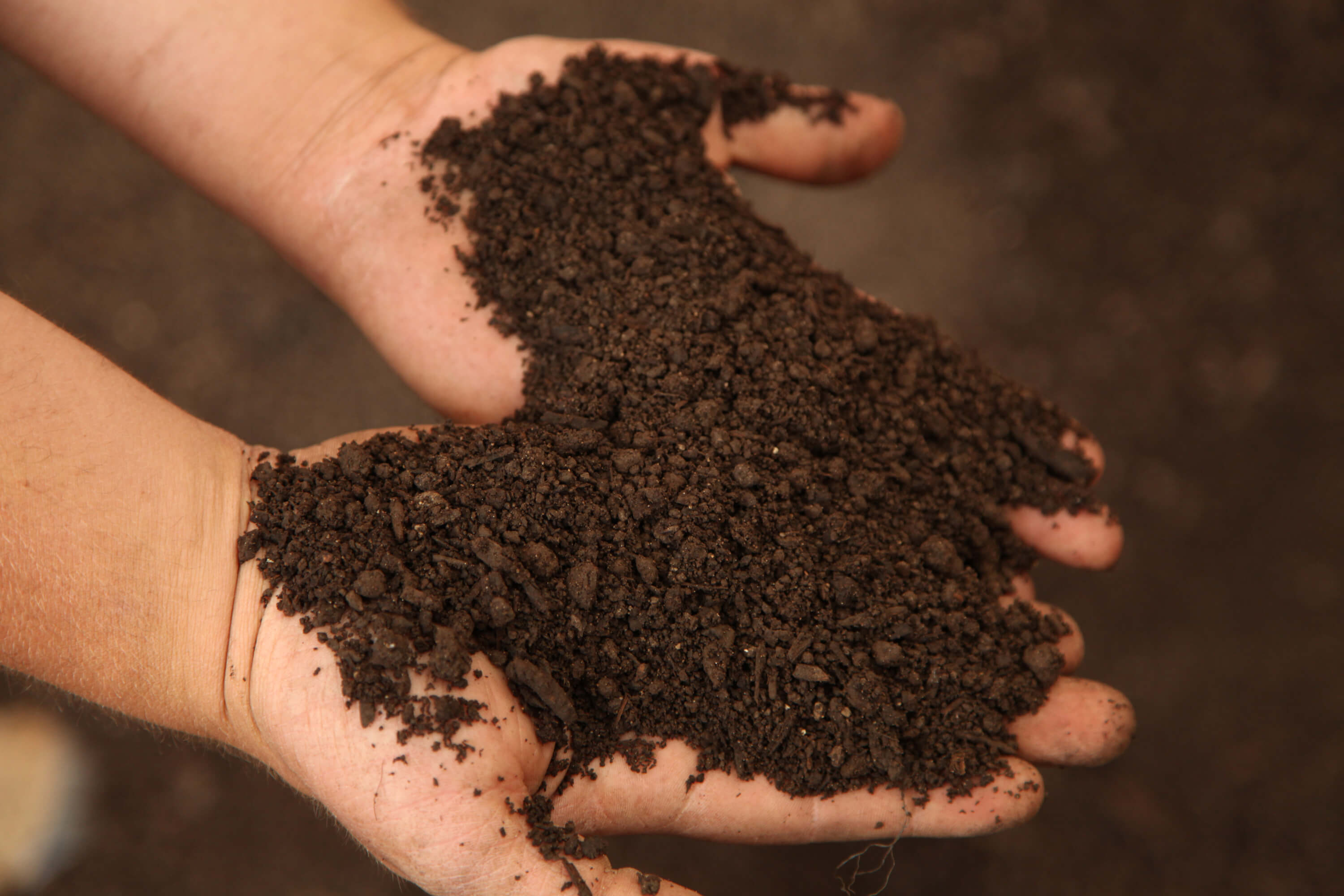

Ploughman's Choice is the ultimate slow-release soil amendment for gardens and lawns. Composed of 100% composted, all-natural livestock manure, both vegetable growers and Ontario homeowners are discovering the advantages of this remarkable soil amendment and mulch.
Compost is made through natural, biological processes, where existing organic matter breaks down and produces rich humus. Especially when made from 100% manure, as Ploughman’s Choice compost is, compost makes an incredibly rich soil additive, packed with nutrients and a wealth of advantages for your soil.
Healthy soil is a living, breathing ecosystem. Adding compost to heavy soils lightens the soil, improving air and water inflitration and ultimately resulting in better plant strength.
Compost, like a sponge, increases the water-holding capacity of your soils. This, in turn, reduces drought risks and irrigation requirements.
Plant growth depends on the availability of essential nutrients - especially nitrogen, phosphorus and potassium. Adding compost is like giving your plants a buffet selection of all critical nutrients.
Compost improves your soils organic matter and overall soil structures, making a thriving, healthy bed for your vegetables and flowers. Plus, it becomes more resistant to erosion and compaction.
Inorganic fertilizers can provide quick growth benefits, but compost introduces micronutrients and microbes that help to sustains plant growth in the long-term.

As any experienced vegetable gardener can confirm, compost can be one of the key ingredients of growing garden success! Thriving soil ecosystems provide the foundation for thriving plants, and thus, a rich harvest.
We recommend a 1" thick application of compost over your garden soil. Mix it in evenly to a depth of about five inches. Top dressing when planting can also be beneficial, but do keep in mind that adding too much compost can actually harm the plants as well. To ensure balanced, consistent soil amendments, we suggest regular soil testing.

Adding compost to flowerbeds is an excellent, cost-effective way to improve growth, blooms and, ultimately, beauty. For flower gardeners, manure compost can be used as a soil amendment that is worked in, or as a seasonal mulch that enriches the soil.
Apply approximately 1” of compost, working it into the soil with garden tools or a tiller while taking care not to damage plant roots. Water the entire area until saturated.
Apply 2” inches of compost, working it into the top 5” of soil. Then plant and water your flowers.

Apply a light dressing of compost over planted grass seed; then water. The compost will help your seed germinate and take root.
Compost makes an excellent soil bed for new grass sod, encourag- ing grass to root deeply and making lawns more drought-resistant. Add 2” of compost and till into existing soil.
Adding a thin layer of compost to your existing lawn helps maintain or improve your lawn’s long-term soil health. Before spreading, we recommend aerating the area. Spread a 1⁄2” of compost evenly over the area using a leaf rake or dressing machine. After application, water thoroughly to help integrate the added compost with the ex- isting soil. We recommend adding this annually to help ensure the quality of your lawn.

Adding compost to flowerbeds is an excellent, cost-effective way to improve growth, blooms and, ultimately, beauty. For flower gardeners, manure compost can be used as a soil amendment that is worked in, or as a seasonal mulch that enriches the soil.
Apply approximately 1” of compost, working it into the soil with garden tools or a tiller while taking care not to damage plant roots. Water the entire area until saturated.
Apply 2” inches of compost, working it into the top 5” of soil. Then plant and water your flowers.